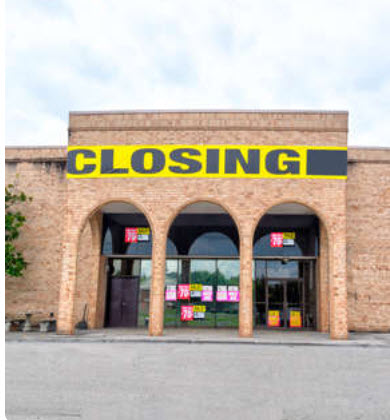 In cities as diverse as Portland, Seattle, Spokane, and even Austin, TX., retail rents and those for manufacturing and warehouse space have increased by double-digit percentages over the last year alone.
In cities as diverse as Portland, Seattle, Spokane, and even Austin, TX., retail rents and those for manufacturing and warehouse space have increased by double-digit percentages over the last year alone.
As the cost of space rises, neighborhoods that have long provided the kind of varied environment in which entrepreneurs thrive are becoming increasingly inhospitable to them.
Independent businesses that serve the everyday needs of their communities are being forced out and replaced by national chains that can negotiate better rents or can afford to subsidize a high-visibility location.
COMMERCIAL RENT SPIKING …
 The cost of commercial space is spiking upward around the country, driven both by run-away real estate speculation and the growing popularity of urbanism. As a new generation discovers the appeal of walkable and mixed-use neighborhoods, demand for small commercial spaces in those neighborhoods is far outpacing supply, and rents are rising to match.
The cost of commercial space is spiking upward around the country, driven both by run-away real estate speculation and the growing popularity of urbanism. As a new generation discovers the appeal of walkable and mixed-use neighborhoods, demand for small commercial spaces in those neighborhoods is far outpacing supply, and rents are rising to match.
Locally owned enterprises, which thrive in these areas, are increasingly threatened with displacement from the neighborhoods that they’ve made vibrant, and getting replaced by national chains that can negotiate better rents or afford to subsidize a high-visibility location.
 As high rents shutter longtime businesses, they also create an ever-higher barrier to entry for new entrepreneurs, stunting opportunity and leading to a scarcity of start-ups in cities once known for their business dynamism.
As high rents shutter longtime businesses, they also create an ever-higher barrier to entry for new entrepreneurs, stunting opportunity and leading to a scarcity of start-ups in cities once known for their business dynamism.
In one Seattle neighborhood, near the residence of a Revitalization Partners Principal, a number of restaurants and a gym, often frequented by his family, are closing due to rent increases which are proving to be non-negotiable with landlords.
NEIGHBORHOODS ARE DIMINISHED …
When once-thriving blocks become taken over by generic national brands, local business owners lose. But so do cities and the people who live in them.
 The businesses on the front lines of rising rents are the grocers and hardware stores, the neighborhood-serving businesses selling everyday goods with little padding on their margins.
The businesses on the front lines of rising rents are the grocers and hardware stores, the neighborhood-serving businesses selling everyday goods with little padding on their margins.
When these businesses get displaced, residents lose the ability to walk to the store for their shopping, to bump into neighbors, and to chat with the business owners, who often attend to a variety of community needs that go well beyond making sales.
“We’ve been priced out of a ZIP code that we’ve been in for the past 18 years,” wrote a local retailer in Austin in the comments of a survey of independent businesses. “I don’t mean rents slowly creeping up; I mean we would be paying more than double.”
This business owner isn’t an outlier. In a survey, 59 percent of retailers reported being worried about the increasing cost of rent, and one in four described it as a top challenge.
FASTER TICKET TO FINANCING …
Behind these rising rents are a complex constellation of causes that span new urbanism and global capital. On the demand side, cities are booming, and there’s an increased demand for the small-scale, walkable storefronts in which independent businesses thrive.
 National chains, too, are entering the hunt for space in cities, drawn by rising populations and having saturated the suburbs, seeking new markets.
National chains, too, are entering the hunt for space in cities, drawn by rising populations and having saturated the suburbs, seeking new markets.
On the supply side, as older buildings—which were generally designed to have small-scale, ground-level retail space—are getting razed for new development, those new projects often don’t replace them, instead containing commercial space that’s larger-format and designed for a national chain.
For the real estate developers behind these projects, securing a single large ground-floor tenant makes a project easier. A name-brand tenant is a faster ticket to financing for a project, especially within a banking system that’s increasingly national and international in scope.
“The way that projects are financed, they go to a safe way of doing development and they have large tenant spaces that make the banks happy that are lending to them,” says Ken Takahashi, in the Seattle Office of Economic Development.
 This bias toward large spaces in new construction further skews the built environment in favor of bigger companies and compounds the issue of rising rents.
This bias toward large spaces in new construction further skews the built environment in favor of bigger companies and compounds the issue of rising rents.
“In a lot of places, the spaces are not the right size for smaller businesses that really only need a fraction of what’s available, and they can’t afford to pay rent on a much larger space,” Takahashi says.
LANDLORD’S BALANCE SHEET …
Another challenge is that real estate developers and the brokers they hire are often themselves national in scale. They lack knowledge of the local businesses in the market, but already have ongoing relationships with many national brands.
 Similar incentives, driven by how buildings are financed, also lead property owners to favor chains. While there is a perception that national chains pay higher rents, that’s not necessarily true.
Similar incentives, driven by how buildings are financed, also lead property owners to favor chains. While there is a perception that national chains pay higher rents, that’s not necessarily true.
In some cases, it’s local businesses that have to pay higher rents in order to prove themselves, while national chains are given a discount for their perceived stability and creditworthiness.
“A formula retail tenant may not be paying more per square foot, but it adds some creditworthiness to the balance sheet for the landlord, and it makes your bank happy,” says Rodney Fong, president of Fong Real Estate Company in San Francisco and a member of the San Francisco Planning Commission.
Banks and other lenders often provide lower interest rates or better terms if a building owner has signed a national brand. When property owners and investors can get better terms by leasing to a business like a Target, Fong explains, “Target will win every day.”
MARKET DISTORTIONS …
Structural incentives and geographic biases like these are further distorting the commercial real estate market for locally owned businesses, making it difficult for them to compete on their own merits.
 At the same time, property values are soaring, for reasons that include financial speculation and, in the present climate, real estate is becoming an increasingly popular place for global investors to park their capital.
At the same time, property values are soaring, for reasons that include financial speculation and, in the present climate, real estate is becoming an increasingly popular place for global investors to park their capital.
Combined, these factors are creating rent increases that local businesses can’t absorb. Many of them are forced through the expense and challenge of relocating their business or closing altogether.
In one survey of businesses along Magazine Street in New Orleans, 76 percent of local business owners reported fearing that soaring rents would force them off of the street.
A report from the city of Boston found that among the city’s primary gaps in its small business ecosystem, “Some gaps, such as a lack of available, affordable real estate, are pervasive and affect most small businesses in the city.”
Revitalization Partners specializes in improving the operational and financial results of companies and providing hands-on expertise in virtually every circumstance, with a focus on small and mid-market organizations. Whether your requirement is Interim Management, a Business Assessment, Revitalization and Reengineering, a State Receivership or Bankruptcy Support, we focus on giving you the best resolution in the fastest time with the highest possible return.


